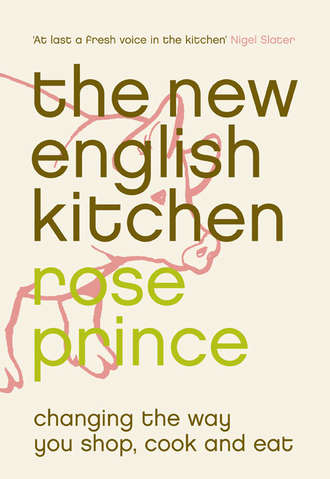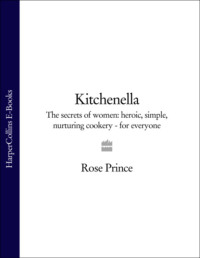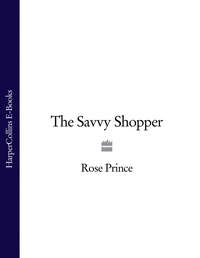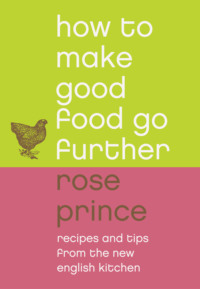
Полная версия
The New English Kitchen: Changing the Way You Shop, Cook and Eat
freshly ground black pepper
extra virgin olive oil, to serve
For the dough:
540g/1lb 2oz plain flour
1/2 teaspoon salt
7g sachet of fast-action (easy-blend) yeast
150ml/1/4 pint milk, warmed to blood temperature
200ml/7fl oz water, warmed to blood temperature
2 tablespoons olive oil
Put the flour, salt and yeast in a mixing bowl and slowly add the milk and water, mixing until it forms a dough. Knead by hand (see here) or in a food mixer until the dough is smooth and elastic. Add a little more flour if the dough is too sticky. Pour the oil into a large, clean bowl, add the dough and turn to coat it in the oil. Cover and place in the fridge for a minimum of 8 hours and up to 24 hours (you can use it sooner, after 2 hours, but it will not be pliable).
Preheat the oven to its highest setting (a commercial pizza oven cooks pizza at 350°C). A preheated pizza stone or perforated pizza baking dish helps; use in place of a baking sheet.
If you have time, bring the dough to room temperature before you shape the pizzas. Take half the dough and use your fingers to press it into a circle. Then pick it up and ‘open’ it with your hands by holding the edges and turning it about 45 degrees at a time. The pizza base should measure 30cm/12 inches across. Place on a baking sheet (or on the preheated pizza stone – but work fast when adding the tomato and cheese). Repeat for the second pizza.
Stir the oil and basil into the tomato sauce, then smear the sauce on to each circle of dough and scatter the mozzarella on top. Bake until the outer edge bubbles and turns crisp and the mozzarella is melted but not browned. Shake over a little extra virgin oil and grind over some black pepper before you eat the pizza.
kitchen note
Liquidised canned Italian tomatoes or passata can be used in place of the tomato sauce, but the pizza must cook fast at a high temperature for the tomatoes to sweeten and the juice to evaporate.
other uses for pizza dough



making the most of stale bread
It is easy to glance around the kitchen and say, ‘I have nothing in the house’, but that is not strictly true if the end of a loaf is lurking in the bread bin. This section of the bread chapter is intended to change ‘I have nothing …’ to ‘hmmm, well perhaps …’, or even to, ‘I have eggs, I have some herbs and I can make toast …’ Then there are breadcrumbs, so quick to defrost after storage in the freezer, then fry in olive oil with a little garlic and parsley to serve with pasta, or use as a coating for meat that has been hammered thin (see here).
The art of making bread go further has become almost extinct – partly because of the preservatives in commercially baked bread, but also because it is the kind of hand-me-down information that disappeared when mothers stopped cooking and broke the chain of food lore. It is not that recipes using stale bread are old-fashioned – Tuscan bread soups are now championed by contemporary chefs as one of the most delicious things in the world. Their recipes invariably suggest using the ubiquitous ciabatta but it is fine to make use of that old loaf of everyday bread.
Good bread deteriorates faster than sliced and wrapped factory-baked loaves containing preservatives such as citric acid. They will not, however, develop a mould quickly, but gradually dry out during the week. My experience with factory-made breads is that they deteriorate suddenly approximately six days after they are bought, when an outbreak of mouldy spots appear and the whole lot must go in the bin.
Sourdough bread, on the other hand, has an extraordinary life. The crust will dry but no spots appear for up to two weeks. Because it costs more, I tend to scrape or cut any mould away and continue popping the bread under the grill, where it obediently becomes springy inside and crisp on the outside – edible again.
This is what a home-made loaf can give, assuming it yields 10 slices of bread. Half the loaf is eaten fresh over a day for breakfast, or in packed lunches; 4 slices of the drying remains are toasted and put in the bottom of four soup bowls, then a vegetable broth spooned over; the remainder is made into breadcrumbs. Half the breadcrumbs are used to coat some hammered chicken thigh meat and the other half fried with herbs and nuts beside a separate dish of roast pheasant or partridge. Fifty pence goes a long way with food.
toast
There’s nothing new. The French have croûtons, Italians crostini – we have toast. Crostini sounds so neo-Italian, so latter-day peasant that it is easy to forget that it is simply toast. Putting things on toast is genius – ordinary, everyday items of food are greatly elevated by their toasted mattress of bread. Toast belongs to the British Isles, and it is one of those things that we do better than anyone else. Thick slices of toast with butter and marmalade, what better breakfast? Apart from perhaps boiled eggs and toast. Or scrambled eggs on toast.
My father was very fond of savouries. These were small dishes, often on toast, served after the main course. They are out of fashion now, outside the gentleman’s club. His favourite was sardines on toast – and yes, they were from a can. We quaked with horror at the table, but out came the macho Worcestershire sauce: ‘They must have Worcestershire sauce!’ And he was right. They were very good after a liberal shaking.
sardines on toast
I tried them again the other day, with very little modification, and liked them all over again. It is the same story of good and bad food in England. They do need good bread, good butter and good sardines. You can buy line-caught canned sardines from Spanish shops and delis. Ramon Bue is an excellent brand that has been around for ever – as long as Worcestershire sauce, in fact.
Serves 4
8 canned sardines
4 medium-thick slices of day-old bread
butter
Worcestershire sauce
chopped parsley
Pick over the sardines without damaging their silver skins. Where possible, remove the gritty spines or obvious bones. Toast the bread and spread it with butter while it is still hot. Lay fillets from 2 fish on top of each slice, skin-side up, and put under a hot grill for 2 minutes. Dress with Worcestershire sauce and sprinkle with parsley.
dripping toast
When well-hung beef is roasted, it produces a full-tasting dripping with a jelly beneath that can only be described as nectar. Hot toast or Melba Toast (see here), cut nicely into triangles, with a fifty-fifty mixture of dripping and jelly spread on top, finished by black pepper and maybe a watercress leaf, is a completely respectable thing to serve with drinks. It fed the poor for centuries, but was killed off by tasteless, poorly hung meat. It is not an everyday dish; a little dripping is good for you but too much is not. But on those occasions when you splash out on the best beef joints, make sure you collect the dripping to make Roast Potatoes (see here), pilaffs (see here) – and for toast.
more good things on toast








melba toast
Melba toast is made by splitting a piece of toast apart and baking it in the oven. It has a lovely old-fashioned feel to it and is wonderful with those smooth duck liver pâtés from delis, finished with a slice of pickled cucumber. Use it also as a base for semi-dried tomatoes (sold as sunblush) and dress with virgin olive oil, or break it up and throw it into leafy salads with herbs, spring onions, lemon juice and olive oil.
The renowned chef, Auguste Escoffier, named Melba toast after the prima donna, Dame Nellie Melba, in 1897. But in her book, English Bread and Yeast Cookery (Allen Lane, 1977), Elizabeth David found an earlier recipe written by the Scottish home cook, F. Marian McNeill, proving that Melba toast belongs as much in our own kitchens as it does in the grand dining rooms of old hotels.
Serves 4
4 thin slices of white or brown bread
Preheat the oven to 180°C/350°F/Gas Mark 4. Toast the bread on both sides, then cut off the crusts. Using a serrated knife, split the toasted bread apart into 2 sides; you will find it comes away easily. Cut each side into 2 triangles, place them on a baking sheet and bake in the oven until dry. They tend to curl up, looking lovely as you bring them to the table in a basket.
kitchen note
To make a rich toast that will not go soggy, brush each side of the Melba toast with melted butter before you put it in the oven. This will keep for a week in an airtight container.
breadcrumbs
Like chicken bones, prawn shells and vegetable peelings, breadcrumbs are a gift to the cook. They are essentially ‘free’. The crusted end of a dry loaf or the cut-away crusts from Melba toast, once headed for the duck pond in the park, still form the basis of another meal. They can perform a variety of jobs, from making a filling winter pasta dish to becoming a summer salad, spiked with chilli and soaked with olive oil.
There are two ways to make breadcrumbs:
Simply put stale but soft bread into the food processor and whiz. These crumbs can be used for stuffings, bread sauce and meatballs, but if you want to dry them, put them on a baking sheet and place in a moderate oven until golden.
Or – dry out old bread slices and rolls in a moderate oven, then either whiz them in a food processor or put them in a strong, thick plastic bag and crush with a rolling pin.
kitchen note
Dried breadcrumbs can be stored in an airtight container, where they will keep for at least three weeks. Fresh ones must be stored in the freezer.
bread sauces for poultry and game
These absorb and flavour the juices of poultry beautifully. I prefer them to bread-based stuffings which can take ages to cook, drying out the birds as they do so.
fried breadcrumbs with lemon
The pine nuts can be left out altogether, or replaced with pecans (for turkey), walnuts (for duck) or shelled unsalted pistachios (for partridge or pheasant).
Serves 4
4 tablespoons olive oil
4 heaped tablespoons fresh or dried breadcrumbs
zest of 1 lemon
4 sprigs of parsley, chopped
2 tablespoons pine nuts
1/2 teaspoon crushed pink peppercorns
Heat the oil in a small pan, add all the remaining ingredients and fry gently until golden. Serve with roast turkey, wild duck, partridge or pheasant.
kitchen note
Middle Eastern shops are the best places to buy dried nuts of every variety (and dried fruit, for that matter). Large bags of pistachios and walnuts are always fresh and cost about half the price of those found in conventional groceries and supermarkets.
almond, sherry and clove sauce
An aromatic sauce with a crumb base.
Serves 4
4 tablespoons olive oil
4 garlic cloves, chopped
4 tablespoons fresh or dried breadcrumbs
4 tablespoons ground almonds
8 sprigs of parsley, finely chopped
1/2 teaspoon ground cloves
a pinch of ground cinnamon
1 glass of sherry
175ml/6fl oz chicken stock
salt and freshly ground black pepper
Heat the oil in a pan, add the garlic and cook until golden. Stir in the breadcrumbs, almonds, parsley, spices and some black pepper. Add the sherry, bring to the boil and simmer for a minute. Then pour in the stock and simmer for a further minute. Season to taste with salt. Serve with rice, beside roasted poultry or game.
traditional bread sauce
Serves 6
600ml/1 pint whole milk
1 onion, peeled and halved, studded with 5 cloves
a pinch of grated nutmeg
about 10 tablespoons fresh breadcrumbs
1 tablespoon butter
salt and freshly ground black pepper
Put the milk in a pan and add the onion halves and nutmeg. Heat to boiling point, then turn off the heat and leave to stand for at least half an hour. Reheat, adding enough fresh breadcrumbs to form a thick sauce, then stir in the butter and season to taste. If the sauce becomes too thick, let it down with more milk.
breadcrumb coatings – suspicious minds
In Italy, difficult food is made appetising for children by coating it in breadcrumbs: veal, chicken or lamb is hammered until thin, then concealed in a crust (see here). It is a proven means of getting children used to the flavour of real meat and away from fast-food nugget culture. You can also use the technique for plaice, prawns, green vegetables such as courgettes – in fact anything that you may not normally get past their suspicious minds on the basis that it is not chips. Crumbed food can be fried in a shallow layer of olive or sunflower oil. Keep an eye on the temperature; the food should emerge from the pan golden, not mahogany.
You need three bowls:



kitchen note
Any food that has been crumbed will keep safely in the fridge for the usual time without spoiling. You can also freeze the crumb-coated food before you cook it.
breadcrumbs and garlic with pasta
If possible, use orecchiette pasta for this dish, because the little, saucer-like shapes catch the breadcrumbs so neatly.
Serves 4
400g/14oz broccoli, broken into florets
400g/14oz short durum wheat pasta
2 garlic cloves, crushed
4 tablespoons fresh or dried breadcrumbs
4 tablespoons olive oil
salt and freshly ground black pepper
freshly grated Parmesan cheese, to serve
Bring 2 pans of water to the boil and add salt. Cook the broccoli for 5 minutes and the pasta for whatever time is recommended on the packet (reputable Italian brands give very accurate cooking instructions). The idea is for both to be ready at the same time, so you can drain them in the same colander.
Just before you serve, fry the garlic and breadcrumbs in the oil until golden. Drain the pasta and broccoli and return them to the pasta pan. Stir in the breadcrumbs, season with salt and pepper and serve with grated Parmesan cheese.
kitchen note
Use steamed courgettes, shredded Savoy cabbage, spring greens, calabrese or string beans instead of the broccoli.
breadcrumb, garlic and parsley butter stuffing for shellfish
A treat for large mussels or clams on the half shell. The butter and crumbs make expensive shellfish go further because you can mop up the juices with crusty white bread. You can also serve scallops in the same way.
Serves 4
120g/4oz unsalted butter, left at room temperature overnight
6 sprigs of parsley, finely chopped
6 heaped tablespoons fresh breadcrumbs
2 garlic cloves, finely chopped
24 large mussels or 40 clams, cleaned (see here)
sea salt
Pound together the butter, parsley, breadcrumbs and garlic and work in a pinch of salt.
Put the mussels or clams in a large pan, then cover and place over a fairly high heat for 2–3 minutes, until they open. Allow to cool. Remove the top half of each shell, leaving the mussel or clam in the other half. Spread a little stuffing into each (1/2–1 teaspoonful, depending on the size of the shell). Arrange on ovenproof plates – individual ones are best – and place under a hot grill. If you do not have a grill, preheat the oven to 240°C/475°F/Gas Mark 9. Cook until the breadcrumbs are singed and the butter bubbling.
kitchen note
If you have any leftover steamed mussels, cockles or clams, you can fill them with the breadcrumb stuffing and store them in the freezer if there is no immediate use for them. Even a few make an unusually good snack to have with drinks. Grill or bake as above.
soaked bread
I love recipes with soaked bread. It’s funny but I could never stomach puddings or any dish made with soaked grains but sopping wet bread is in a realm of its own. Why else would just about everyone love bread and butter pudding? Bread dishes usually look a total mess but no one minds. The following recipes are for both fresh and stale bread.
breadcrumb salad
Another bread salad, this time one that uses breadcrumbs from sourdough or ciabatta bread. It is lovely and soggy, with oil, peppers, tomatoes and herbs. You can tailor-make it to your taste. Some prefer to leave out the garlic so you can really taste the quality of the olive oil. Serve it for dinner and most will think they are being given a plate of cold porridge but will come round after the first mouthful.
Italians call this dish panzanella, and the restaurant of the same name in Northcote Road (a wonderful market street in Battersea) gave me its approximate method, which I reproduce here. The restaurant uses Puglian bread but any rustic-style sourdough bread will work.
Serves 4
1/2 day-old ciabatta or sourdough loaf
3 tablespoons extra virgin olive oil
1 tablespoon white wine vinegar
1 garlic clove, finely chopped (optional)
1 carrot, finely grated
6 sprigs of parsley, chopped
salt and freshly ground black pepper
To serve:
1/2 fresh red chilli, chopped, or a strip of sweet red pepper,
chopped
halved cherry tomatoes
small black olives
Tear up the bread, put it in a food processor and whiz to rough crumbs. Put them in a bowl, cover with cold water and leave for 5 minutes. Pour the breadcrumbs into a sieve and, using a ladle, press down to squeeze out all the water. Return the breadcrumbs to the bowl. They won’t look too appetising but once you add the oil and vinegar, have a taste. Add the other ingredients, stirring them in well. Season with salt and pepper to taste. Scatter the chopped chilli, halved cherry tomatoes and olives on top.





